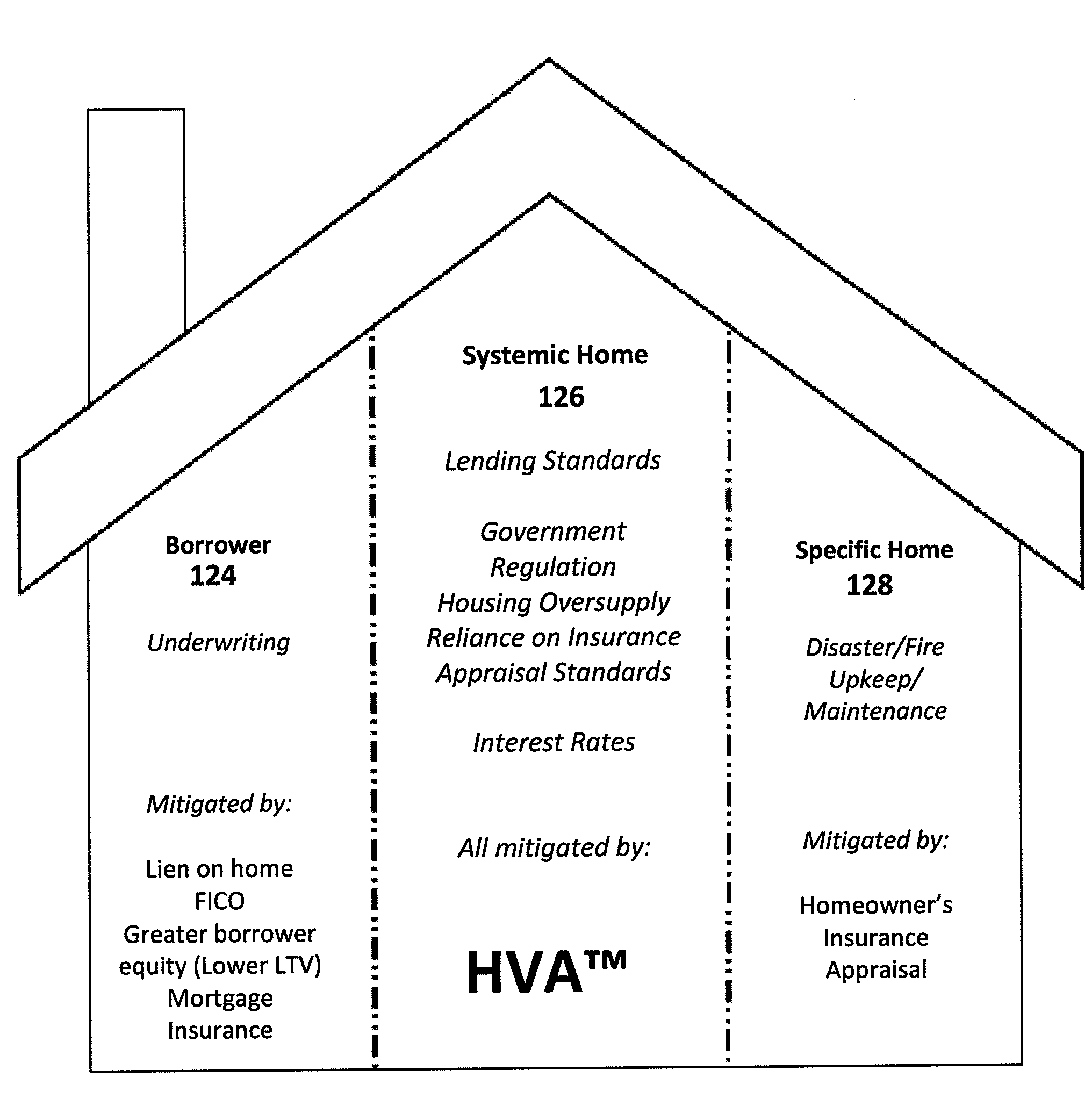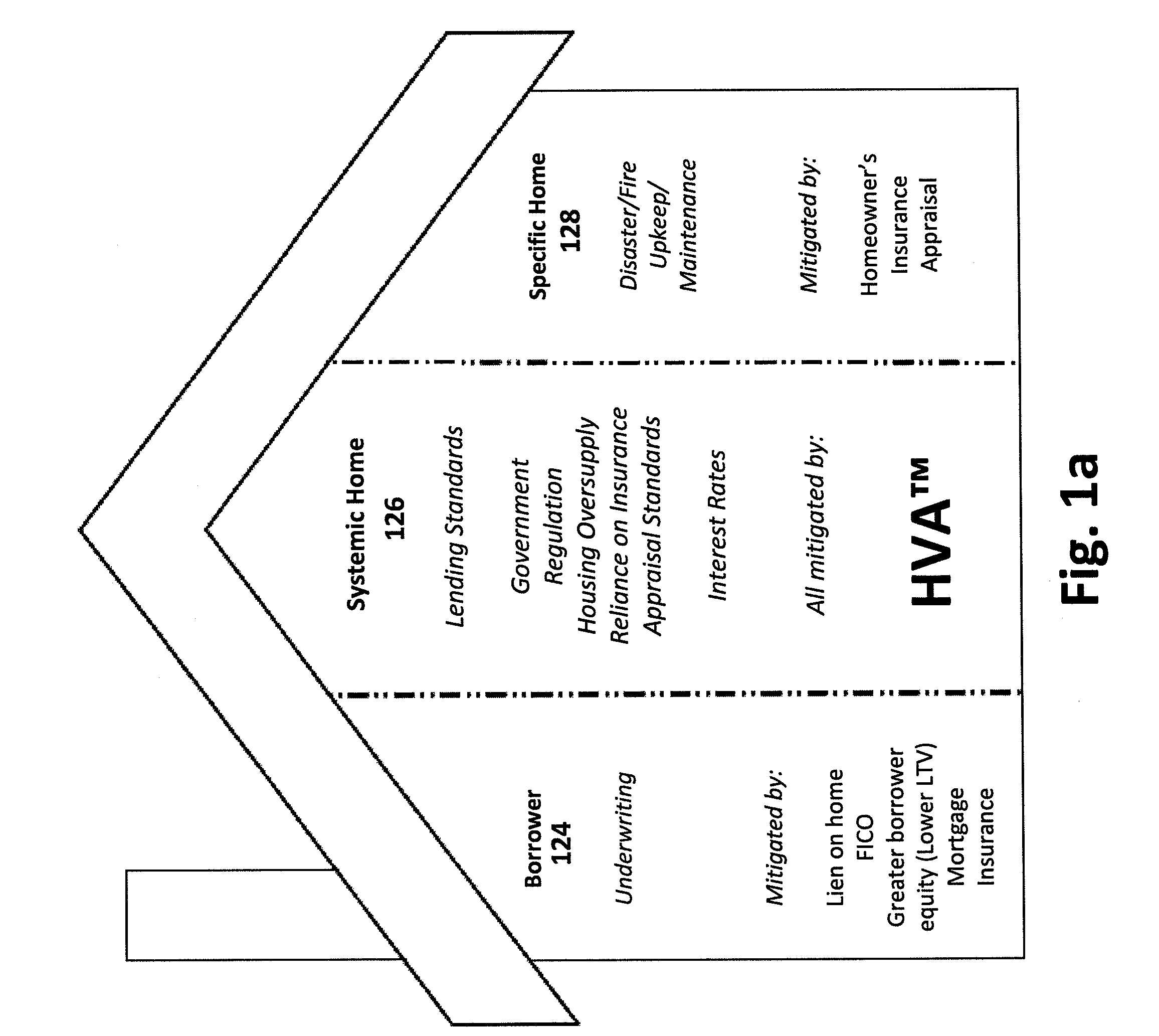A cause of this crisis is generally credited to the collapse of the residential real estate market in the United States.
The
root cause of this collapse was a general lack of understanding of how to properly value residential real properties and how to govern the risks associated with fluctuations in such values.
This method does not adequately provide protection against systemic risks such as home price changes, which tend to be highly correlated across various markets, and at times will violate critical assumptions used when determining insurance premiums leading to inadequate loss reserves.
Since the Great Depression, the Private Mortgage Insurance (“PMI”) business
community has experienced multiple industry-wide failures.
In 1933, under the weight of loan default rates hitting 50% and foreclosures exceeding 1,000 per day, the existing private mortgage insurance industry failed.
However, in the 1980s, the housing market experienced another significant
crash and with it, many PMI companies declared bankruptcy and stopped writing new business.
In 2009, the industry found itself in trouble again with $20 billion in claims to support lender clients.
Given potential regulatory changes in housing finance, and a continued challenging housing market, the future for the PMI industry remains uncertain.
However, all of these programs used small insurance reserves as protection against home price declines that proved to be inadequate coverage during the real estate downturns of the 1980s and 1990s where home prices in the referenced neighborhoods experienced highly correlated price performance that violated the standard insurance actuarial model predictions.
Property derivatives as risk mitigates have been studied and attempted since the early 1990s in both the U.S. and U.K., however those attempts have typically resulted in outright failure or very limited utility.
The common forms of derivatives (e.g., Forwards, Swaps and Options) were all viewed as viable instruments to apply to the property market as they, in theory, may provide very customizable investment and hedging strategies; however, the practical implementation of them has proven to be a failure.
However, forwards and swaps (a series of forward contracts) instruments that allow two parties to exchange monies at a future date based on the performance of a reference index, proved impractical for direct
consumer and small institutional usage due to the complexity and expense of managing clearing exchange margin requirements while calibrating and maintaining appropriate hedge ratios.
Larger institutions that have the expertise and income to
handle such technical and expense aspects were not able to participate on a large scale simply due to the
counterparty risk inherent in these “promise to pay” instruments.
Options to enter into forward contracts, though suffering from
counterparty risk and complexity as well, thus limiting their use to smaller institutions and consumers, have the added handicap of relying heavily on the existence of an active and high volume forward market such that standard pricing methodologies can be applied.
Without the active forward market, the potential user of options can not satisfy the mark-to-market (valuation) mandates.
However, this instrument has all of the pricing weaknesses of the standard derivative embedded within it, plus the
counterparty weakness for the note buyer.
Such features embedded market and reinvestment risks in addition to creating a limit to the natural customer base, thus capping the funds' own utility and ultimately failing to achieve the goal of becoming the basis of an improved futures and option market.
The article states that “AIG warned of turmoil around the globe if the government allowed the insurer to fail, adding ‘it is questionable whether the economy could tolerate another shock to the system that a failure of AIG would produce.’ The value of the U.S. dollar might fall, Treasury borrowing costs could rise and the agency would face ‘doubts about the ability of the U.S. to support its banking system,’ according to the presentation, parts of which were reported earlier by the New York Times.
However, the systemic risk inherent to real estate investments, via highly correlated home values, requires a separate framework (e.g., HVA™) to transfer.
There are, however, crucial deficiencies in the Home Equity Protection Product taught by McGill.
The majority of the deficiencies generally relate to a lack of protection awarded to the seller of the protection and / or the lack of available funding.
This
payment arrangement puts the seller of the protection at risk of
consumer or institutional creditworthiness.
Similarly, another deficiency is the lack of protection provided to the sellers of the protection.
However, the “American Housing Survey” is not robust enough to provide the best representation of changes in real estate valuation.
Another limitation of McGill is the teaching that the logical expiration point would be the home owner's final mortgage
payment date, and / or any time at which the buyer of the HEP sells the home, since it is at this point that he would truly suffer from any depreciation in the value of the property.
Although this would seem favorable to the home owner, the ability to cancel or cash out the policy at any time would create volatility for the investor and would require commensurate compensation from the homeowner.
The ability of the protection buyer to terminate coverage at random points in time creates what is commonly termed “prepayment” and “reinvestment” risks to the institutional investor.
Unfortunately, while McGill describes a general process of moving home price risk, McGill is devoid of necessary and sufficient features specific to HVA™ that create a unique and commercially viable securitization process.
As in the McGill applications, Nalebuff also lacks the fundamentals required to facilitate true transference of home price risk from a home seller to an HVA™ Note investor where a fully-funded protection reserve protects the buyer from the absolute failure of the under-funded insurance reserve
model application in the real estate industry.
However, the use of such index multiple only creates
instability in the fund's maturity and thus the maturity and return to investors is only stable / predictable within a
narrow band of index values, i.e., a stable market.
MacroShares creates complexity for investor's initial pricing exercises, in addition to the maturity
instability.
Although plausible on its face, as discussed below, MacroShares contains a number of maturity limitations.
First of all, although MacroShares uses Treasury-grade collateral securities, the collateral securities are mandated short-term (i.e., shorter than the stated maturity of the funds), thus the fund's ultimate return cannot be stated at the forefront as short-term reinvestment rates fluctuate.
In addition, the stable maturity allows HVA™ Note investors to address their specific concerns (outside of the HVA™ process) of interest rate risks, inflation risks, etc. which cannot be done efficiently with an investment in the MacroShares securities.
A key deficiency is that MacroShares securities do not isolate home price risk and embed tremendous market risk making them unsuitable for use by the larger real estate market as a whole.
Although the derivatives market is the common access point for protection buyers and sellers of all asset classes to express their financial exposures directly or indirectly, the structural short comings and interdependence of participants creates tremendous systemic risk capable of crippling the entire financial system.
 Login to View More
Login to View More  Login to View More
Login to View More 


